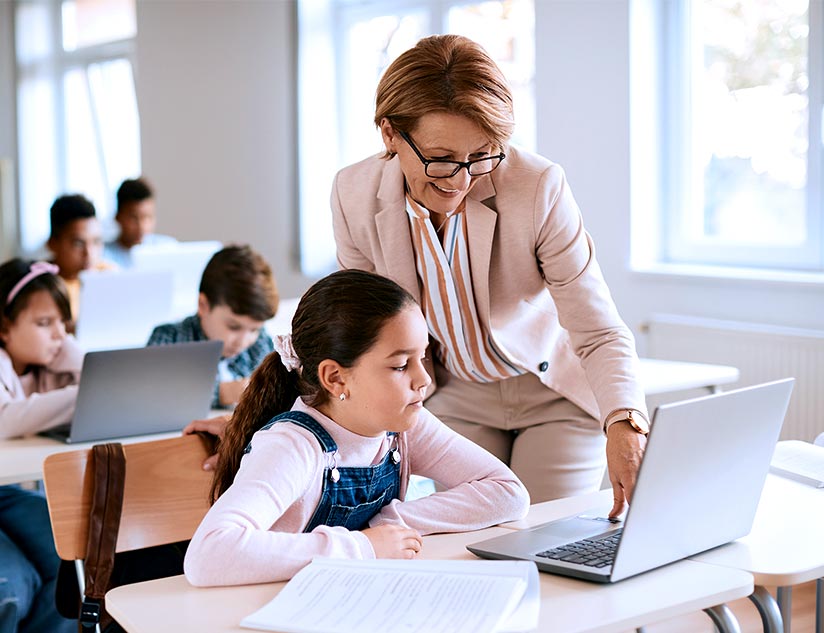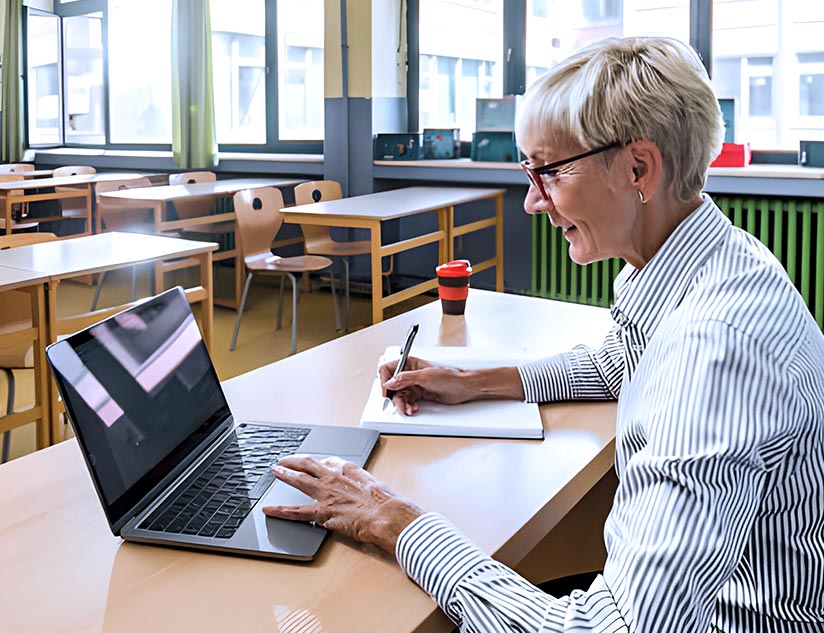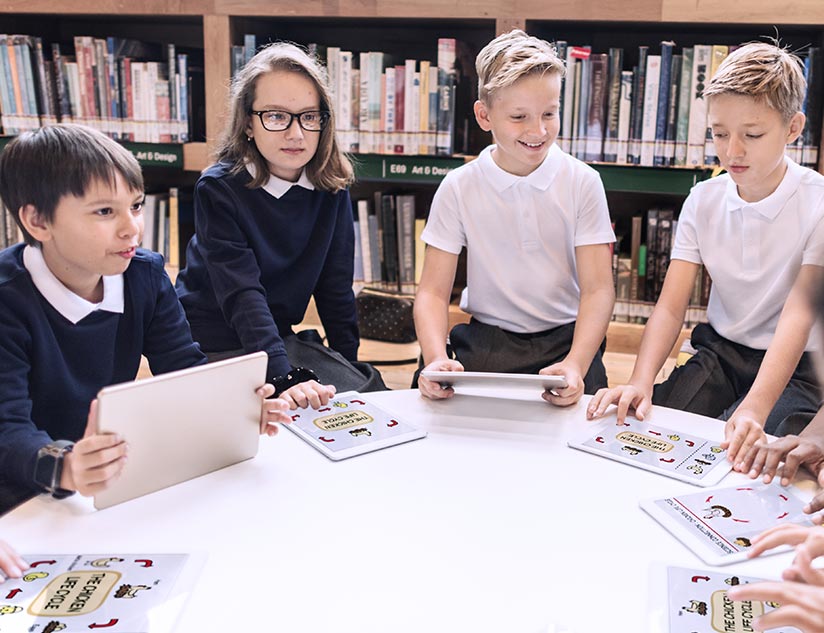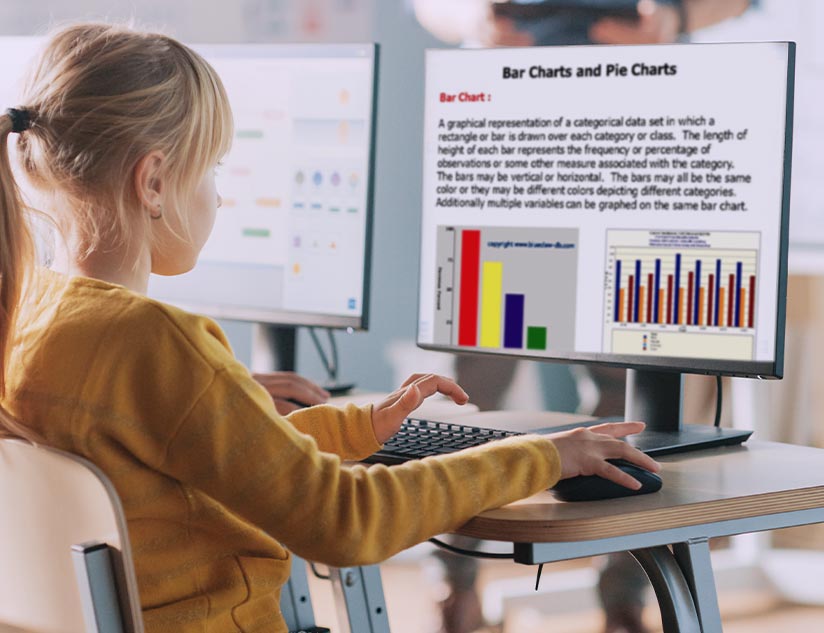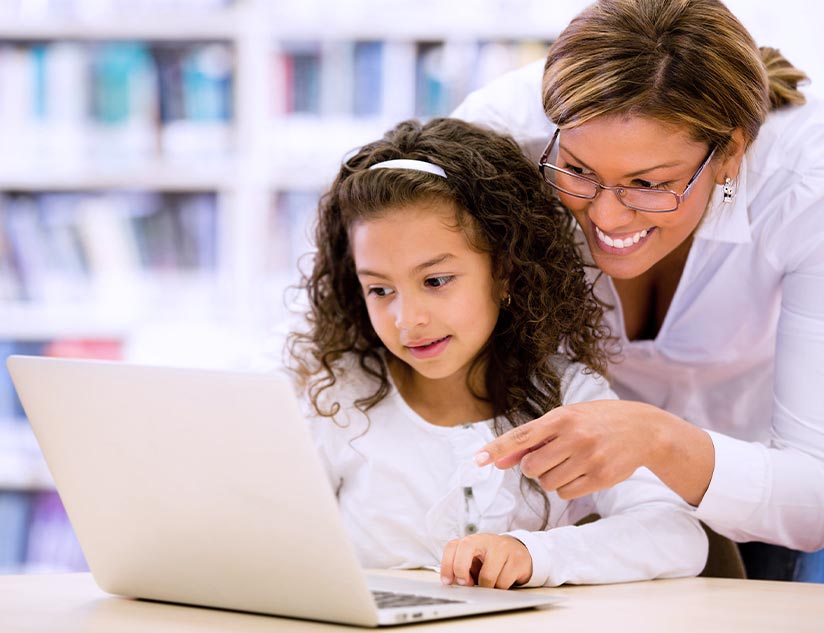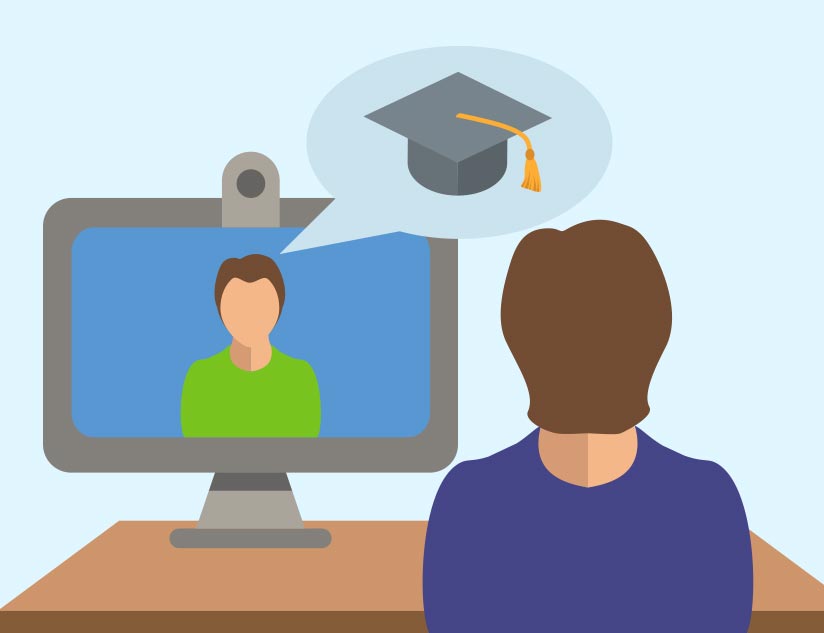Improving Learning in Classroom with Digital Education
July 12th, 2017
There was a time when learning was purely restricted to the classroom and the last thing students were interested in after school was the curriculum. According to Deloitte’s 2016 Digital Education Survey, 75% of students are interested in spending time after school to learn more about what they study in school. And the fact that 73% of students rely on digital learning materials to aid their understanding of concepts over the summer means that technology sits right at the centre of this shift.
Owing to the rapidly-evolving technology and adaptive e-Learning methods such as flipped classroom models, student interaction with course material is currently seeing a clear transformation. This has helped K-12 education expand its reach beyond the traditional classroom.
According to Deloitte’s 2016 Digital Education Survey, 75% of teachers believe that digital content is set to replace textbooks in the next 10 years. With almost half of the surveyed classrooms already using a digital device every day, the writing on the wall is clear – education is up for an overhaul!
More students take to e-Learning
Videos, apps, websites, and game-based learning are gradually taking over from printed material and traditional forms of teaching. More students are taking to mobile devices, laptops, tablets, etc. to plug into the digital learning space both inside and outside of the classroom. Owing to the availability of electronic devices at home, along with a growing interest by teachers, parents, and students in learning outside of the classroom, education is seeing an unprecedented expansion.
According to the survey, 90% of children use digital learning materials at home and 2/3rd of them start by the age of 5. Almost 75% are interested in spending time learning more about concepts when they’re not in school. Thus, students are using technology not just for passive content consumption but for active learning.
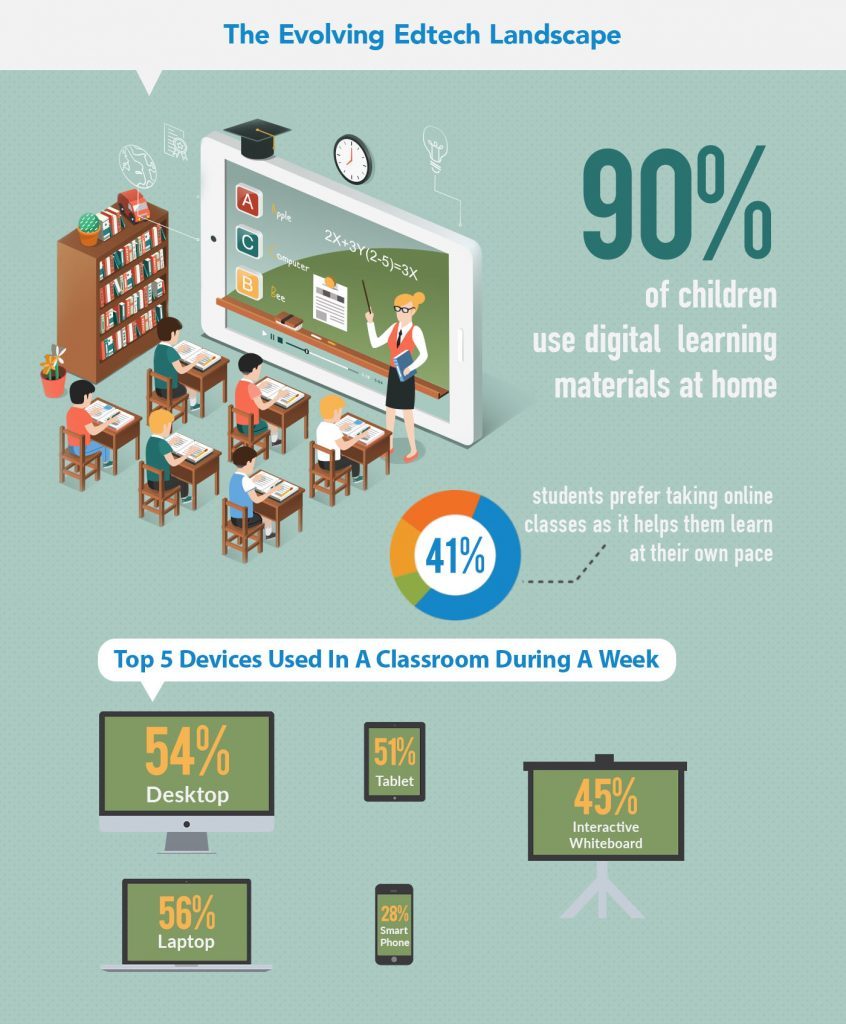
The increased role of teachers in EdTech
Not just students, parents and teachers are also more interested in at-home learning today.. 88% of parents and 84% of teachers want to have more at-home digital content supplementing school curriculum. The survey also finds that teachers remain central to digital adoption. By a wide margin, parents trust teachers the most for advice on both digital devices and learning materials.
The role of a teacher in the 21st-century world of learning is constantly evolving. While digital tools have made a lot of traditional instruction seem somewhat monotonous now, it has also freed up the teachers to undertake deeper learning interactions with students, shifting their role from ‘instructors’ to ‘mentors’. A case for the pronounced role of teachers in the K-12 industry is thus strong. Here is how the role of teachers in digital transformation of education can be harnessed to provide more meaningful learning outcomes-
Teachers have an enhanced role in decision-making:
Technology has enabled teachers to extend learning beyond the classroom by offering them access to instructional materials. The teacher’s role in e-Learning remains incredibly important since it is the teacher who witnesses the impact of the technology firsthand. A 2016 TES Global Survey reveals that an increasing number of teachers want more say in purchase decisions of tech learning platforms. While 59% want to be primary decision-makers about the technology in the classroom, only 36% are currently consulted, demonstrating that the teacher buy-in does not yet play a major role in purchase decisions. However, it’s the teacher who knows what is required and what is best for the students, in terms of suitable technologies, student requirements and their learning capacity. Teachers are said to be better equipped to spot flaws in a given model, ensuring that the goals of education are met. This calls for an increased say of teachers in choosing tech learning platforms and decision-making.
Adequate training for teachers:
A lack of training can be one of the biggest barriers to incorporating technology into teaching. Teachers need appropriate technological training so that they can understand how to improve learning outcomes with the help of latest tools available to them. Only if they are well-versed with technology, can they effectively leverage technology to teach interactive digital courses. Thus, schools need to support teachers in accessing and learning to use the needed technology. The US Department of Education proposed a spend of $200 million on technological training of teachers and school leaders. This need was recognised to support them through professional development, mentoring, and informal collaborations to improve instruction and personalized learning.
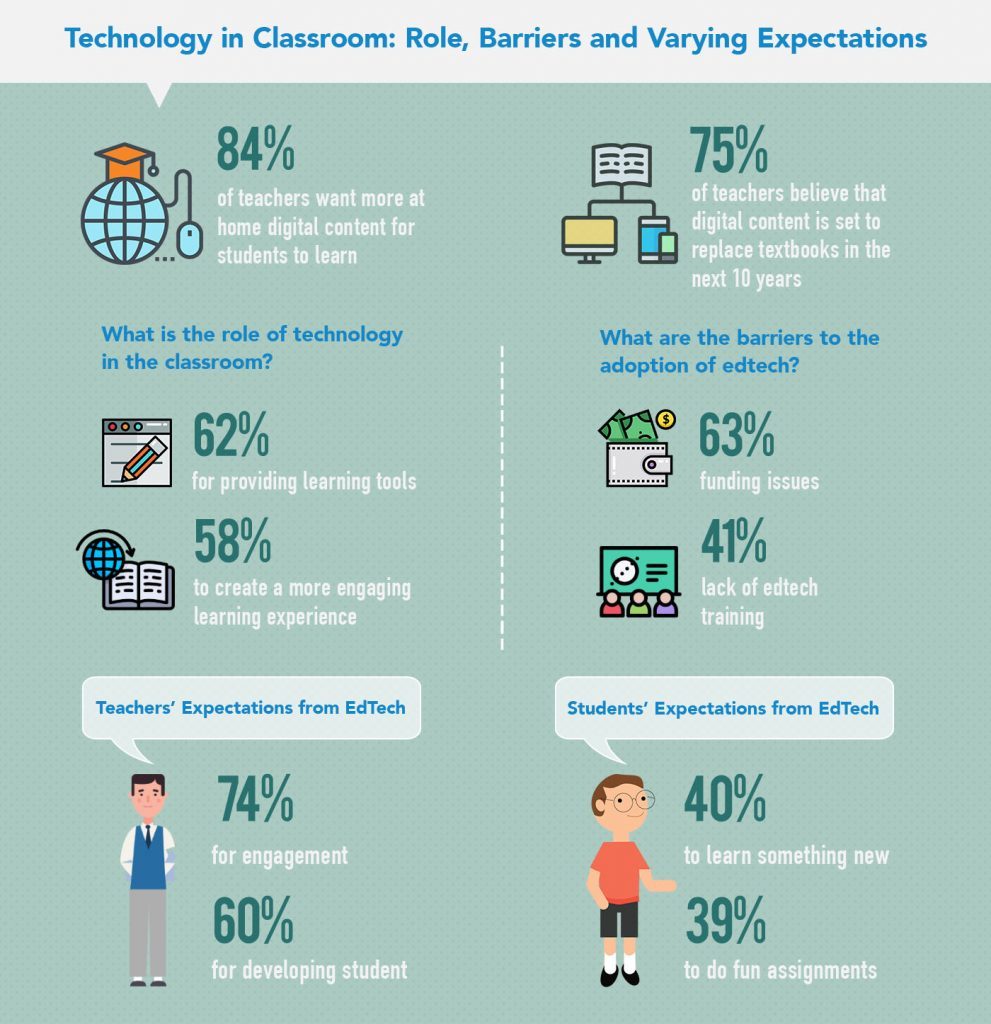
From instructors to mentors:
Technology is empowering teachers to go from being instructors to co-learners with their students by building new experiences for deeper exploration. Teachers can leverage new formats of pedagogy like flipped classrooms with the help of technology, effectively becoming mentors rather than instructors.
Teachers as promoters of game-based learning and simulations:
Educators can incorporate game-based learning to provide knowledge to students in a fun, engaging way. Especially in the case of STEM education, an increased use of games imparts a more practical understanding of theoretical concepts to students without them having to leave the classroom. Students can be involved in situations that urge them to solve challenging problems through game-based learning. According to the survey, 52% of the teachers used games that focus on specific skills or content to promote learning among their students.
Educators can also employ digital simulations to help learners address real world problems in a more practical manner. While simulations are currently utilized by only 13% of the teachers, this technology can enable personalized, relevant learning, allowing educators to design learning experiences. Such technology-enabled simulations can be more engaging and relevant to learners.
Critical thinking:
Using technology, educators must design assessments that inculcate critical thinking skills and problem-solving abilities in learners instead of promoting rote-learning. By doing this, they can challenge students to come up with solutions and achieve learning goals. To develop critical thinking skills in students, educators can encourage them to solve community problems through technology, social networks, etc. By helping students effectively leverage EdTech, educators allow them to examine problems and think deeply about their learning.
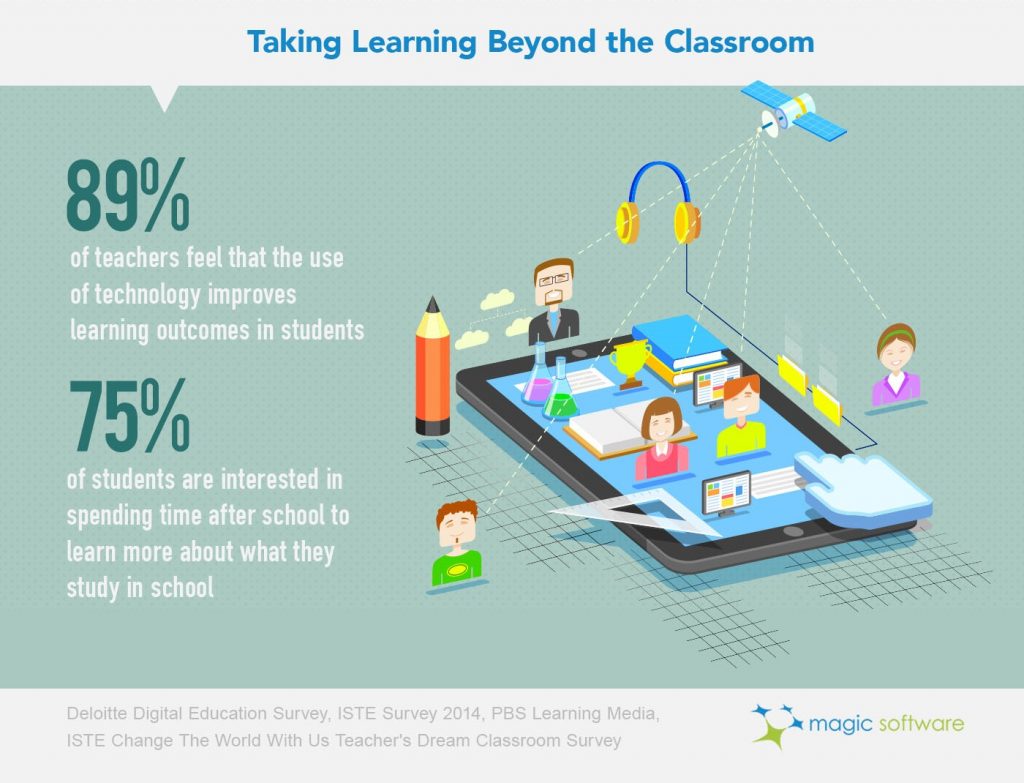
In the future, the role of teachers will also become more pronounced in assisting students and parents with overcoming the obstacles of technology adoption. They will be increasingly relied on by fellow teachers, parents and students to gauge the potential of learning inside and outside of a classroom. To facilitate these changes in the sphere of EdTech, it’s important to understand the ‘why’ of the current scenario, while adequately preparing to answer for the ‘how’ to incorporate efficient technology acceptance and adoption.



